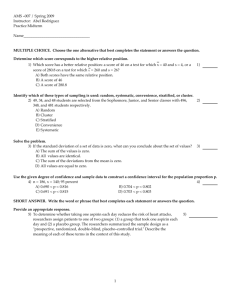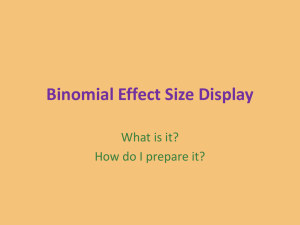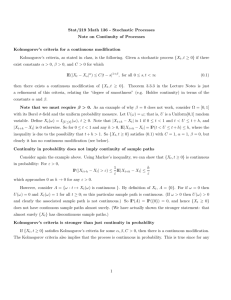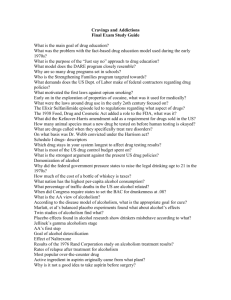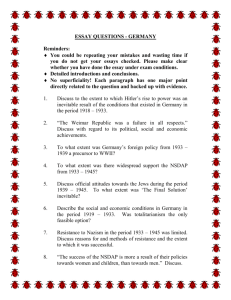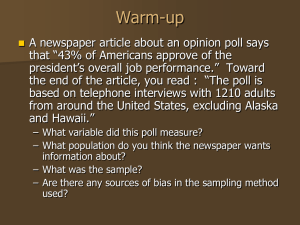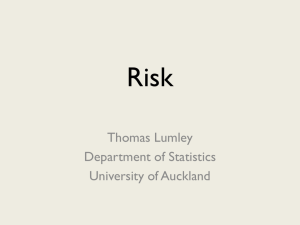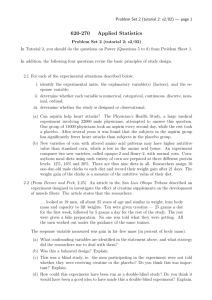Lecture_intro
advertisement
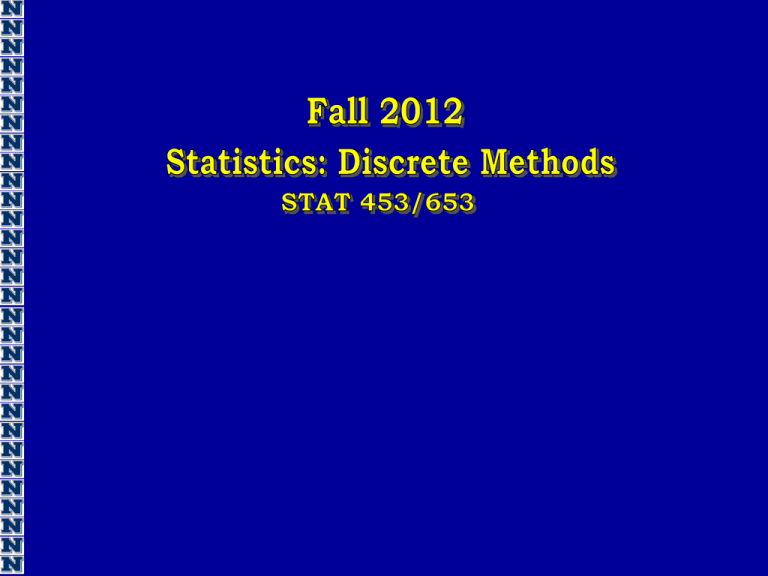
The probability theory begins in attempts to describe gambling (how to win, how to divide the stakes, etc.), probability theory mainly considered discrete events, and its methods were mainly combinatorial Gerolamo Cardano (September 24, 1501 – September 21, 1576) Author of the first book on probability “De Ludo Aleae” ~ “On the dice game” written in 1560s, published in 1663 … eventually, analytical considerations motivated the incorporation of continuous variables into the theory. The foundations of modern theory of probability were laid by Andrey Nikolaevich Kolmogorov, who combined the notion of sample space, introduced by Richard von Mises, and Lebesgue measure theory and presented his axiom system for probability theory in 1933 (Grundbegrie der Wahrscheinlichkeitsrechnung, by A. Kolmogorov, Julius Springer, Berlin, 1933, 62 pp.) Henri Léon Lebesgue (June 28, 1875 – July 26, 1941) Andrei Kolmogorov (1903-1987): A founder of modern theory of probabilities (1933) Richard Edler von Mises (19 April 1883 - 14 July 1953) Having given the number of instances respectively in which things are both thus and so, in which they are thus but not so, in which they are so but not thus, and in which they are neither thus not so, it is required to eliminate the general quantitative relativity inhering in the mere thingness of the things, and so to determine the special quantitative relativity subsisting between the thusness and the soness of the things. M. H. Doolittle, 1887 Karl Pearson (March 27, 1857 – April 27, 1936) established the discipline of mathematical statistics George Udny Yule (18 Feb 1871, Scotland -- 26 June 1951, England) Sir Ronald Aylmer Fisher (17 February 1890 – 29 July 1962) http://datamining.typepad.com/gallery/blog-map-gallery.html No Heart attack Heart attack Aspirin Placebo No Heart attack Heart attack Aspirin Placebo No Heart attack Heart attack Aspirin Placebo

